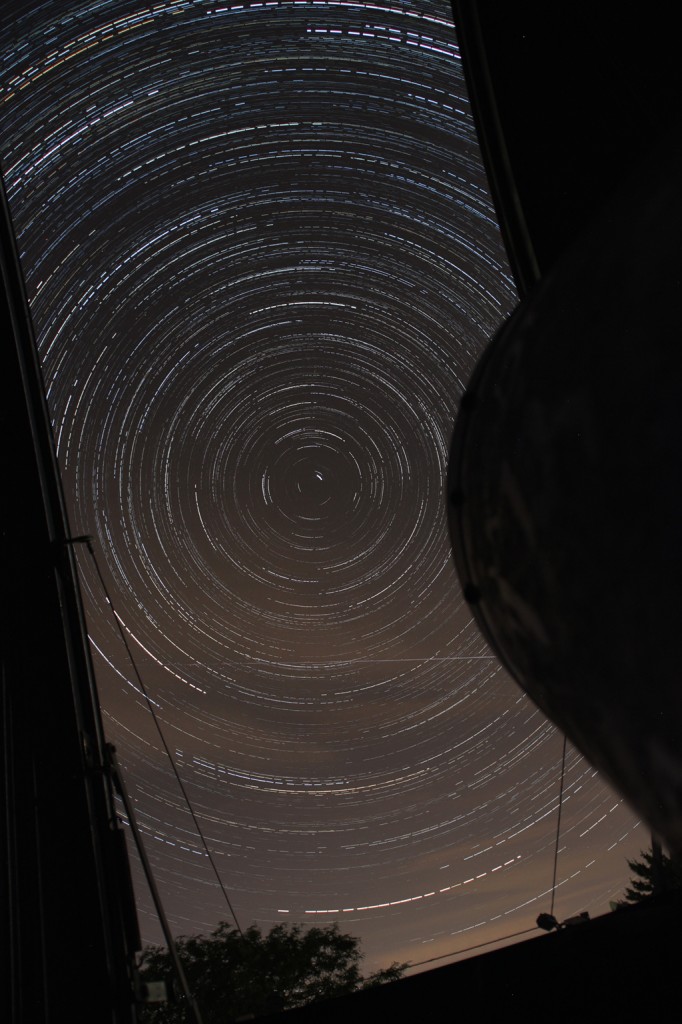Here is the first in a series of APOWs (Astronomy Pictures of the Week) which I’ll be posting most every Friday. These will be pictures taken of Van Vleck Observatory (VVO) itself or those from our telescopes out into the cosmos. Now without further ado…
The Earth’s rotation can be a blessing allowing us a cycle of light and dark along with an ever changing view of the sky. This same rotation can also be found a burden, requiring precise telescope tracking mechanisms to observe a celestial object for any extended period of time; similar, though undoubtedly cruder, mechanisms being required of umberphilic beachgoers.
Through a non-tracking telescope one can see the Earth’s rotation in real time, objects slowly drifting across the eyepiece’s field of view; by naked eye the rotating sky can only be detected as discrete changes over the course of an hour or so, the motion itself too slow to be seen by the casual observer. (If you look very closely at shadows cast by moon- or sun-light, or the image they make of windows on the floor, for example, you can better see this motion occurring).
Below is a video showing the ‘circumpolar motion’ of stars about the North Celestial Pole, which is quite close to Polaris; it was taken with my personal camera from the 16″-telescope’s dome, on the roof of VVO. The 30sec video consists of approximately an hour’s worth of photos strung together:
Along with watching these photos sequentially, they can also be overlaid to create ‘star trails’. Below is an overlay of the same photos used to make the movie above. The gaps in the trails are due to a few minutes between the end of one round of photos and me starting the next, planes can be seen streaked along the bottom, and a dark band below Polaris running up and to the right is likely due to exposure issues for a specific round of photos.



